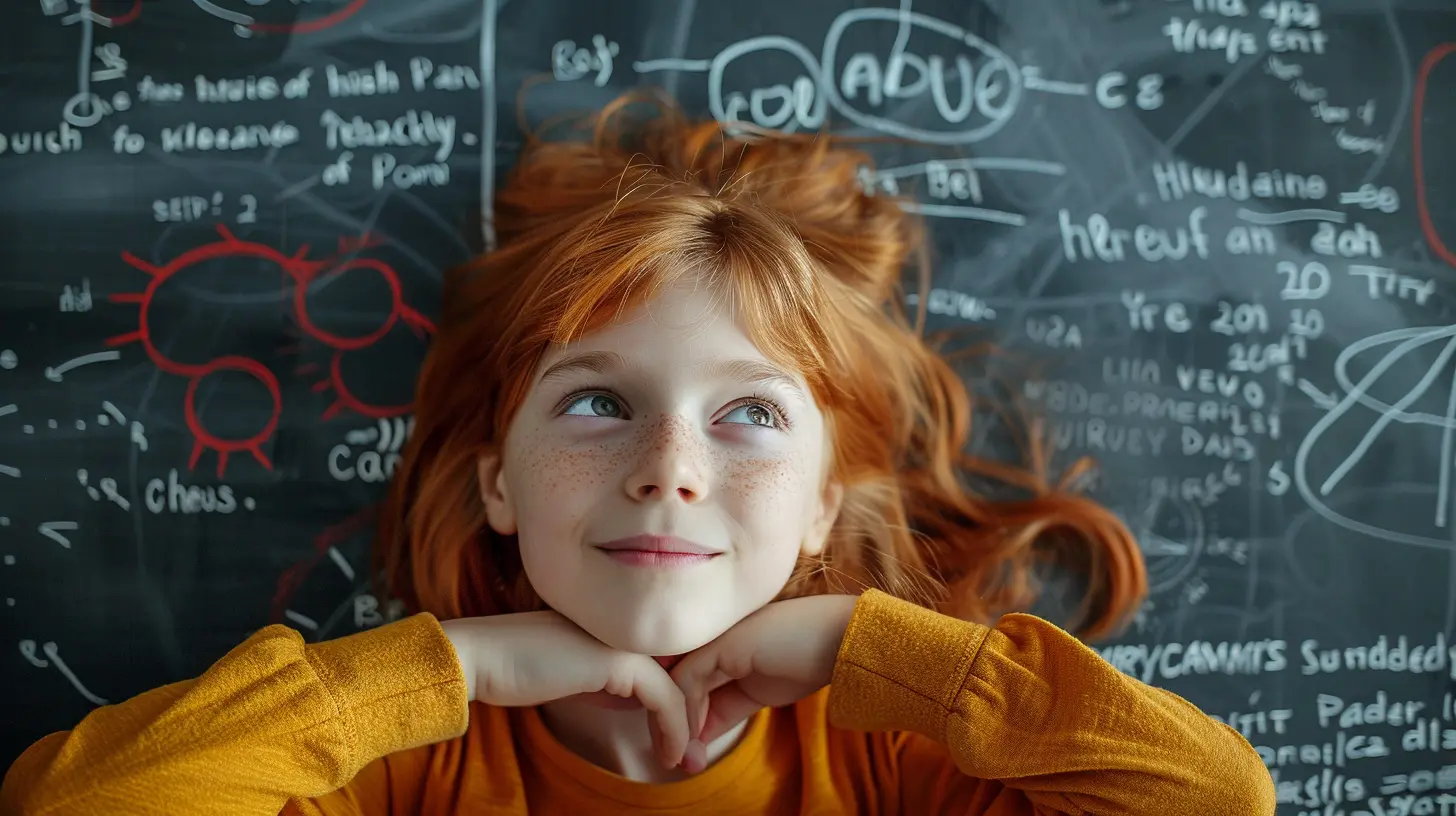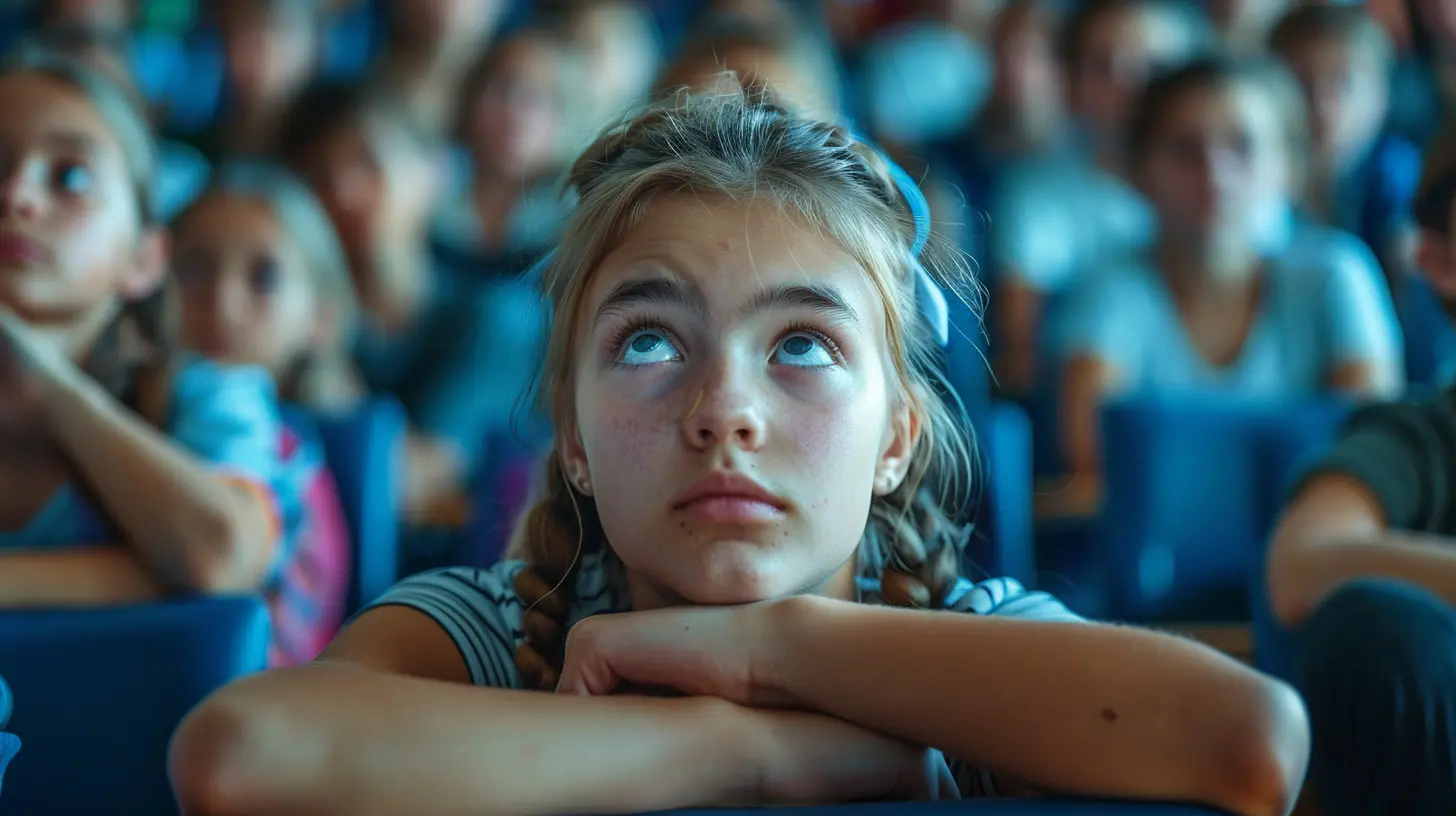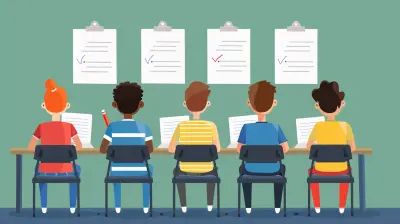Addressing Underachievement in Gifted Students: What Can Be Done?
23 August 2025
When you think of gifted students, what comes to mind? High test scores, endless curiosity, straight A's, lightning-fast problem-solving? Sure, that’s the stereotype—but reality often paints a very different picture. The truth is, many gifted students don’t always live up to their potential. They underachieve. And guess what? It’s far more common than most people realize.
So, what can be done to turn things around? Let’s break it down and really get to the root cause of the problem so we can fix it.
What Does Underachievement in Gifted Students Look Like?
First things first—let’s define what we’re talking about.Underachievement in gifted students happens when there's a noticeable gap between their potential and what they’re actually producing in school. In simpler terms, they’re not performing at the level we know they could if everything was clicking.
But here's the curveball: underachievement can be stealthy. These students might still be getting decent grades, or they may fly under the radar because they’re not disruptive. However, they often display:
- Lack of motivation
- Poor time management
- Incomplete or low-effort assignments
- Apathy toward achievement
- Disinterest in schoolwork that seems too easy or irrelevant
It’s not that they can’t succeed. It’s that something's blocking the spark that drives them to try.
Why Do Gifted Students Underachieve?
Underachievement doesn’t just pop out of nowhere. There are multiple reasons for it, some hiding in plain sight.1. Boredom—The Gifted Kid’s Arch Nemesis
Let’s be honest—school can be boring. Especially when lessons are geared toward the middle of the bell curve. Gifted students often breeze through material, and if they’re not challenged, they disengage. Imagine running a marathon at a snail’s pace—it’s frustrating.2. Perfectionism: The Silent Saboteur
Some gifted students set impossible standards for themselves. If they can't do something perfectly, they’d rather not try at all. This fear of failure can paralyze them into doing… well, nothing.3. Lack of Connection with Teachers
Gifted kids crave understanding. They often ask questions that diverge from the standard curriculum. When teachers brush them off or push them to conform, students might shut down mentally and emotionally.4. Not Feeling “Gifted Enough”
You’d be surprised how many gifted students don’t even realize they’re gifted. When others expect brilliance 24/7, and they’re struggling with just being human? That pressure can lead to self-doubt and withdrawal.5. Mental Health Issues
Anxiety, depression, ADHD—these don’t discriminate. And gifted students are not immune. In fact, their heightened sensitivity and intense thinking often make them more vulnerable.
So, What Can We Do About It?
Here’s where things get practical. Underachievement isn’t a life sentence. With the right tools, attitudes, and support systems, gifted students can re-engage and shine.1. Rethink the Curriculum
Standardized curriculum doesn’t cut it for exceptional minds.- Differentiate Instruction: Offering compacted content, tiered assignments, and enrichment projects can keep gifted students engaged.
- Use Project-Based Learning: Let them dig deep into topics they’re passionate about. When students own their learning, motivation skyrockets.
- Offer Acceleration: Grade-skipping or subject acceleration can provide the intellectual challenge they crave.
It’s all about meeting them where they are, not keeping them where we feel comfortable.
2. Build Strong Relationships
Would you open up to someone who doesn’t get you? Probably not. Gifted students want to feel understood and respected.- Listen Without Judging: If they say they hate school, ask why—without trying to fix it immediately.
- Validate Their Feelings: Saying “You’re too smart to struggle” helps no one. Struggle doesn’t make them any less gifted.
- Offer Mentorship: Find role models who’ve walked the same path. A connection with a like-minded adult can work wonders.
3. Focus on Social-Emotional Learning (SEL)
Gifted learners often experience emotions more deeply. Social-Emotional Learning is critical.- Teach Growth Mindset: Help them understand that effort matters more than perfection.
- Normalize Failure: Show examples of successful people who failed—often! It helps shift the fear.
- Encourage Self-Reflection: Journaling, mindfulness, and discussions foster self-awareness and motivation.
4. Create a Safe Space for Interests and Differences
Let’s toss the “one size fits all” model out the window. Gifted students need room to be themselves.- Clubs and Enrichment: From robotics to philosophy, let them dive into their passions.
- Flexible Learning Environments: Allow them to choose how and where they learn best. Beanbags? Standing desks? Let’s get creative.
- Peer Groups: Grouping them with intellectual peers combats loneliness and encourages collaboration.
5. Partner with Parents
Parents often know what schools don’t. They see the struggles at home—the late-night meltdowns, the refusal to do homework, the lost spark.- Keep Communication Open: Parents should feel like part of the team, not like outsiders.
- Offer Guidance: Let them know what supports are available and how to advocate for their child.
- Recognize Home Contributions: Many parents provide enriching experiences outside of school that complement academic growth.
Shift the Mindset: From “Fixing” to Empowering
One big mistake we make? Trying to “fix” gifted underachievers as if they’re broken. They’re not broken. They’re misaligned.Rather than focusing only on getting grades up or behavior in line, let’s shift toward empowerment. Let’s ask, “What excites you?”, “What change do you want to make in the world?”, or even just “What do you care about right now?”
When we lead with curiosity and compassion, we unlock something powerful: internal motivation.
Long-Term Strategies That Work
If we’re in it for the long haul (and we should be), then here are some sustainable approaches that yield real results.1. Frequent Check-Ins
Underachievement doesn’t vanish overnight. Regular, informal check-ins with students help catch issues early and adjust support as needed.2. Develop Personalized Learning Plans
Just like IEPs for other exceptional learners, gifted students benefit from tailored plans that include:- Academic goals
- Emotional and behavioral supports
- Interests and aspirations
This gives everyone—students, parents, and teachers—a roadmap to follow.
3. Align Goals with Real-Life Applications
Gifted students often ask, “Why are we doing this?” And honestly, that’s a fair question.Tie lessons to real-world issues—climate change, space exploration, medical innovation. When they see purpose in their learning, they’re more likely to re-engage.
4. Celebrate the Process, Not Just the Product
Praise effort, strategy, and resilience. Don’t just reward the A+ or the finished science fair project. Celebrate the fact that they stuck with it, changed direction when needed, and saw it through.Warning Signs to Watch For
If you're a teacher or a parent, stay alert for clues that something’s off. Here are red flags you shouldn’t ignore:- Sudden drop in grades or effort
- Frequent complaints of boredom
- Emotional outbursts or shutdowns
- Constant procrastination
- Negative self-talk (“I’m stupid” / “I’ll never be good at this”)
The earlier you intervene, the better the outcome.
A Word on Twice-Exceptional (2e) Learners
These are students who are gifted but also have learning differences like ADHD, dyslexia, or autism. Their underachievement often goes unnoticed or misunderstood.Support for 2e students must be dual-focused:
- Challenge their brains.
- Support their learning needs.
They’re not lazy. They’re processing the world in a highly complex way. That requires thoughtful, individualized approaches.
Reigniting the Spark: Final Thoughts
Addressing underachievement in gifted students isn’t about shoving them harder or demanding more. It’s about reconnecting them with their own brilliance.They need to see the value in what they’re doing and feel seen and supported while doing it. Whether it’s through curriculum changes, deeper relationships, emotional support, or meaningful challenges, the end goal is the same: help gifted students thrive—not just survive.
Because when that spark comes back? Trust me, it’s impossible to miss.
all images in this post were generated using AI tools
Category:
Gifted EducationAuthor:

Zoe McKay
Discussion
rate this article
1 comments
Mistral Peterson
Recognizing diverse needs in gifted students is crucial for fostering their true potential.
September 12, 2025 at 2:54 AM

Zoe McKay
Absolutely! Acknowledging and supporting the diverse needs of gifted students is essential for unlocking their full potential and ensuring they thrive academically and personally.


